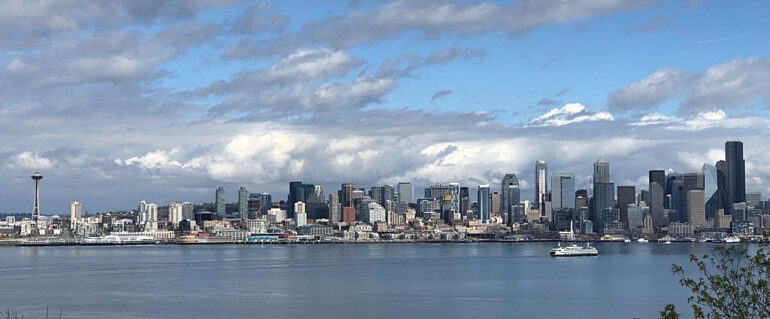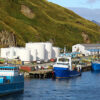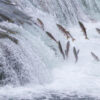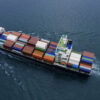Why Seattle Is Known As "The Gateway to Alaska"
Seattle, Washington, has a colorful history as a pioneering town on the West Coast, but why is the city known as the "Gateway to Alaska?" In a word, opportunity. Let's see what history is behind the nickname.
In 1889, Seattle's commercial district experienced a devastating fire that left many of its wooden buildings destroyed. The city responded with tremendous growth, both in the construction of brick or stone buildings (more fire-resistant) and population. Part of the development was due to a robust rail system that brought lumber and supplies. Additional growth came as the Port of Seattle developed.
From the unfortunate fire came the rebirth of Seattle. More structures, industries, transportation routes, and more people. But what happened next, just a few years after the great fire led to another unexpected economic boom; the start of the Klondike Gold Rush.
According to the U.S. National Park Service, "On July 17th, 1897, the steamship Portland docked in Seattle from St Michael, Alaska, carrying 68 prospectors and what newspapers said was "a ton of gold." Two days earlier, a similarly laden ship had arrived in San Francisco from Alaska. What had been just a few hundred prospectors sailing from Seattle each week soon turned into a stampede of thousands. Newspapers spread the word that a great quantity of gold had been found along a remote river in what is today the Yukon Territory of Canada. The Klondike Gold Rush had begun."
With the influx of customers, Seattle businesses began advertising the city as a one-stop place with everything a prospector would need before starting the journey to Canada. To reach the goldfields, prospectors had four popular routes north through the Cascade Mountains or by ship to Alaska (also known as the rich man's route). By land, the trip was far more brutal than anything seen in the California Gold Rush. The Klondike Gold Rush had -50 degrees and unforgiving terrain (mountains) to reach the areas with gold, so it was essential to prepare. However, those traveling even partial way via Alaska had a much easier trip.
Over time, large companies scooped up land and waterways around the goldfields, and the small-time prospectors lost out to the large-scale mining operations, and thus the "gold rush" there ended. It is estimated that 100,000 prospectors traveled to the Klondike region of the Yukon, in north-western Canada, between 1896 and 1899.
With prospectors departing from the Port of Seattle, advertising catch-phrases like "Gateway to the Gold Fields" and "Gateway to Alaska" were popular and a few years later also included Asia as other routes from Seattle were available by ship. By 1909, "Gateway to Alaska and the Orient" was used during the Alaska–Yukon–Pacific Exposition, a World's Fair held in Seattle on the University of Washington campus to publicize the progress that had occurred in the Pacific Northwest.
The nickname "Gateway to Alaska" began as an advertising slogan. Seattle capitalized on the opportunity to be the go-to place for supplies, which led to the opportunity to tell everyone about it.
Today, Seattle is home to the Seattle branch of the Klondike Gold Rush National Historical Park. It's located in one of the buildings built after the great fire of 1889. Visitors can see artifacts from the period, special exhibits, and presentations on the story of Seattle's role in the rush.






